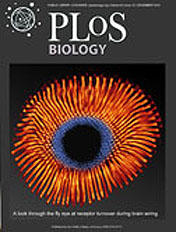Guidance receptor degradation is required for neuronal connectivity in the Drosophila nervous system.
Williamson, W.R., Yang, T., Terman, J.R., and Hiesinger, P.R. – 2010
Axon pathfinding and synapse formation rely on precise spatiotemporal localization of guidance receptors. However, little is known about the neuron-specific intracellular trafficking mechanisms that underlie the sorting and activity of these receptors. Here we show that loss of the neuron-specific v-ATPase subunit a1 leads to progressive endosomal guidance receptor accumulations after neuronal differentiation. In the embryo and in adult photoreceptors, these accumulations occur after axon pathfinding and synapse formation is complete. In contrast, receptor missorting occurs sufficiently early in neurons of the adult central nervous system to cause connectivity defects. An increase of guidance receptors, but not of membrane proteins without signaling function, causes specific gain-of-function phenotypes. A point mutant that promotes sorting but prevents degradation reveals spatiotemporally specific guidance receptor turnover and accelerates developmental defects in photoreceptors and embryonic motor neurons. Our findings indicate that a neuron-specific endolysosomal degradation mechanism is part of the cell biological machinery that regulates guidance receptor turnover and signaling.

